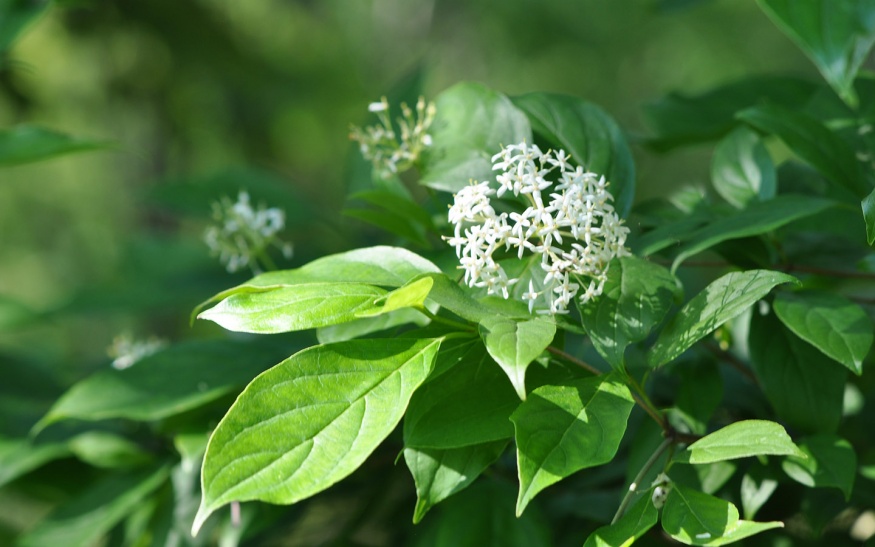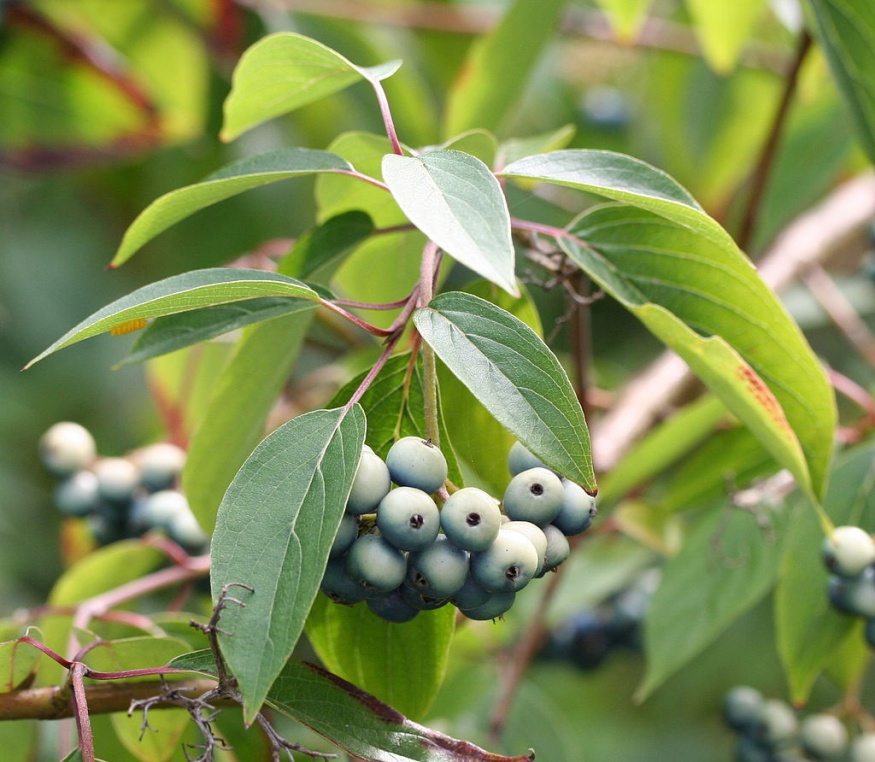Silky Dogwood
 Botanical Name: Cornus amomum
Botanical Name: Cornus amomum Family: Cornaceae Native to: Eastern North America
Hardy to zone: 5
Eco benefits: attracts pollinators, erosion control, attracts birds, pest/disease resistance
Natural habitat: swamps & bogs, waters edge, floodplains
Shapes: round, multi-stemmed, clump, upright
Height: 6-15ft
width: 6-15ft
Unique attractions: fall colour, flowers, fruit
Tolerances: deer resistant, black walnut, soil compaction
Common uses: hedge, naturalized plantings, rain garden
Insects: scale, borers, leaf miners
Diseases: leaf spot, canker, twig blight, root rot, powdery mildew
Light: full sun, partial shade
Soil: moist and fertile, tolerates wet feet, drought tolerant, ph adaptable, acid ph, wet
Silky dogwood is a flowering large shrub native to eastern North America. It can be found in lowlands, swamp or water borders, and wetlands. It prefers acidic, moist to wet, or well drained soil with lots of organic matter. The form is upright, round and spreading to form thickets. The branches can also form roots when in contact with the ground.

leaves are elliptical to ovate with smooth wavy margins and arcuate venation (distinctive of dogwoods) and burgundy fall colour. Twig and leaf undersides have silky hairs, hence the common name 'silky'. The bark is smooth on young trees, bright red in colder times of the year, and reddish brown in the summer. The pith is brown on current years growth which is a distinguishing factor from red osier dogwood (having a white twig pith). Mature bark is brown, turning gray with age and gaining shallow fissures.

Flat topped clusters of small whitish yellow flowers appear from May to June and attract butterflies and bees. From August to September, blue showy berry-like fruit (drupes) follow which is another distinguishing factor from red osier dogwood (having whitish fruit). Mammals such as turkeys, bears, chipmunks, foxes, and deer enjoy the fruit. They're also especially favorited by birds.
Silky dogwood tolerates near full shade and a variety of soil conditions. It can serve as erosion control for borders and river banks. Some pest and disease issues may occur, but generally without serious problems. The shrub is subtly pleasant but not incredibly tidy or showy as a centerpiece; a good choice for woodland, naturalized plantings, waters edge, borders, and windbreaks.
References
Missouri Botanical Garden. (n.d.). Cornus amomum. Retrieved from http://www.missouribotanicalgarden.org/PlantFinder/PlantFinderDetails.aspx?kempercode=g800
The Morton Arboretum. (n.d.). Silky dogwood. Retrieved from https://www.mortonarb.org/trees-plants/tree-plant-descriptions/silky-dogwood
NC State Extension. (n.d.). Cornus amomum. Retrieved from https://plants.ces.ncsu.edu/plants/cornus-amomum/
United States Department of Agriculture. (n.d.). Silky Dogwood. Retrieved from https://plants.usda.gov/factsheet/pdf/fs_coam2.pdf